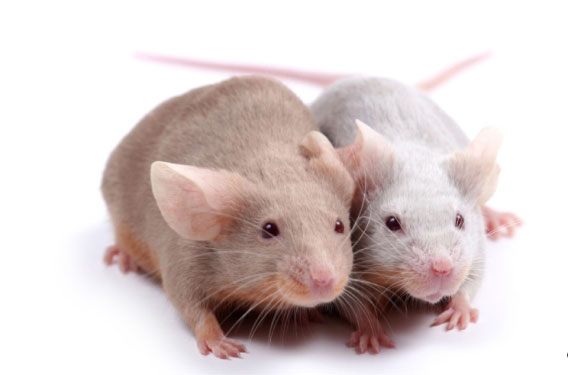Of Mice, Mom and Memory
Could how you remember things as an adolescent be influenced by what happened to your mother during her youth? A preliminary study with rodents says it might be true
A new study reveals that the severity of learning disorders may depend not only on a child’s environment, but also on his mother’s environment when she was young.
In a study of memory-deficient mice, which was published this month in the Journal of Neuroscience, researchers focused on the brain function of pre-adolescent mice with a genetically created defect in memory.

“It is highly likely that an enriched environment influences . . . a variety of memory functions in young mice, not just the ones we detected here,” the researchers wrote. Photo: iStockphoto
When the young mice were enriched by exposure to a stimulating environment—including unusual objects, opportunities for social interaction and voluntary exercise—for two weeks, the memory defect was reversed. The enhancement was surprisingly long-lasting: it was passed on to the offspring, even though the offspring had the same genetic mutation for a memory defect and were never exposed to an enriched environment.
Previous research has shown that environmental exposures during pregnancy can affect offspring. “A striking feature of this study is that enrichment took place during pre-adolescence, months before the mice were even fertile, yet the effect reached into the next generation,” says Larry Feig, a professor of biochemistry at the School of Medicine and a faculty member of the biochemistry and neuroscience programs at the Sackler School of Graduate Biomedical Sciences, who led the research.
“The offsprings’ improved memory was not the result of better nurturing by mothers who were enriched when they were young. When the offspring were raised by non-enriched foster mothers, the offspring maintained the beneficial effect,” says co-author Junko Arai, a postdoctoral associate in Feig’s laboratory who is a co-author of the study.
“The effect lasted until adolescence, when it waned, suggesting that this process is designed specifically to aid the young brain,” adds co-author Shaomin Li, a former postdoctoral associate in Feig’s laboratory who now works at Brigham and Women’s Hospital.
This example of “inheritance of acquired characters” was first proposed by Jean-Baptiste Lamarck in the early 1800s. “However, it is incompatible with classical Mendelian genetics, which says that we inherit qualities from our parents through specific DNA sequences they inherited from their parents,” says Feig. “We now refer to this type of inheritance as epigenetics, which involves environmentally induced changes in the structure of DNA and the chromosomes in which DNA resides that are passed on to offspring.”
“It is highly likely that an enriched environment influences . . . a variety of memory functions in young mice, not just the ones we detected here,” the study authors wrote. “Thus, an enriched environment likely influences many aspects of animal behavior that could be passed on to the next generation.”
Previous research by Feig and his team showed that a relatively brief exposure to an enriched environment in both normal and memory-deficient mice unlocks an otherwise-latent biochemical control mechanism that enhances a process in nerve cells called long-term potentiation, a form of synaptic plasticity that is known to be involved in learning and memory. This enhancement was detected in pre-adolescent mice but not in adult mice, reflecting the brain’s higher plasticity—or strength in the connection between neurons—in the young.
Feig suggests that the transgenerational inheritance of the effect of an enriched environment may be a mechanism that has evolved to protect the next generation from the deleterious effects of sensory deprivation, which may be particularly potent in the young and exacerbated in the learning disabled.


